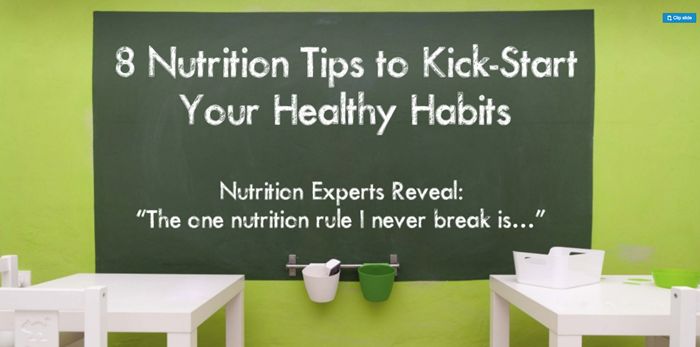Two heads are better than one. Teams can accomplish what individuals cannot. Unity is strength.
I would guess you're picking up on where I'm headed...
In this article, we're going to explore the immense possibilities of content created through collaboration. Why do such a thing? I'll answer that question with a short list, and then we'll dig into a longer list of ways to bring collaborative content to life.
Five Reasons to Collaborate on Content
1. The joy of networking. I'll start with what may be the least obvious benefit. Content creation can be a lonely job, and collaboration can be the cure.
It's fun to meld minds, establish some common ground, and grind the creative gears with your peers. You make friends in the process. Doors tend to open.
2. Greater reach. In 1977, Bing Crosby and David Bowie collaborated on a recording of "Little Drummer Boy." In 1993, Bono recorded a Cole Porter tune with Frank Sinatra.
Those crooner combos are clearly odd couples. But they didn't merely make lovely music together; each of the artists reached across the aisle, figuratively speaking, and enjoyed exposure to a new audience.
Collaborative content works this way—in several ways: more platforms, more media, and a larger audience.
3. Authority. Perhaps the most obvious reason to holler-up a helper in content creation is to explore some new ground or tap into expertise you simply don't have.
4. New perspectives. It's possible you have the expertise to tackle the topic of the content you're creating, but you simply want to bring a new perspective to the party. Say you're a winemaking expert. Obviously, you can pick up new insights and tips from an experienced peer in the industry—and your audience can too.
5. Variety. I applaud consistency, but yawn at predictability. So, I submit, if you play the same card every time you publish, various forms of collaboration adds variety to your output and keeps your content fresh.
Let's now look at some of these forms of content-creation collaboration.
15 Ways to Collaborate on Content
1. Webinar. Webinars give us a classic example of collaborative content. In The A-Z Guide to Running Live Webinars, a robust guide published on the ClickMeeting blog, author Agnes Jozwiak lists six reasons for hosting a guest speaker, many of which reflect the list we looked at above.
Jozwiak writes, "If a respected industry authority endorses your products and speaks with enthusiasm, your credibility improves automatically."

ClickMeeting maintains a robust "press center" where it archives the many webinars and events in which the company has collaborated with subject-matter experts.
2. Roundup. "Rounding up" a roster of experts is a tried and true formula for blog posts, e-books, and other content types. Roundups can be a great read. Participants are likely to help comprise a social media army to promote the content many times across their networks.
In a post on the power of expert rounds, blogger Zac Johnson writes, "Not only are you creating new content and value for your audience, your site is also getting a ton of social media shares, expert exposure, and authority in the process."
A few words of caution, though: (1) Use the roundup approach only occasionally, and (2) feature a reasonable number of collaborators. The "101 Experts..." article can be exhausting to read—and create.
3. Interview. Expert interviews obviously predate digital media and can now apply to nearly every media format.
4. Quote. One form of collaborative content can be as simple as getting an expert outsider to chime in on piece you write or record. Orbit Media's Andy Crestodina is a major practitioner of this approach and solicits one or more expert quotes in nearly every post he publishes.
Andy writes: "You're a journalist. Contributors are your sources. If you can, add a contributor quote to every article."
Also, Andy's a popular speaker on the marketing circuit and keeps his speeches (and slides) fresh by quoting respected peers in marketing.
5. Infographic. I suppose the popular infographic content format doesn't jump immediately to mind when exploring collaborative content plays, but I've had good success with (1) creating infographics entirely based on expert quotes and (2) simply including expert quotes and contributions.
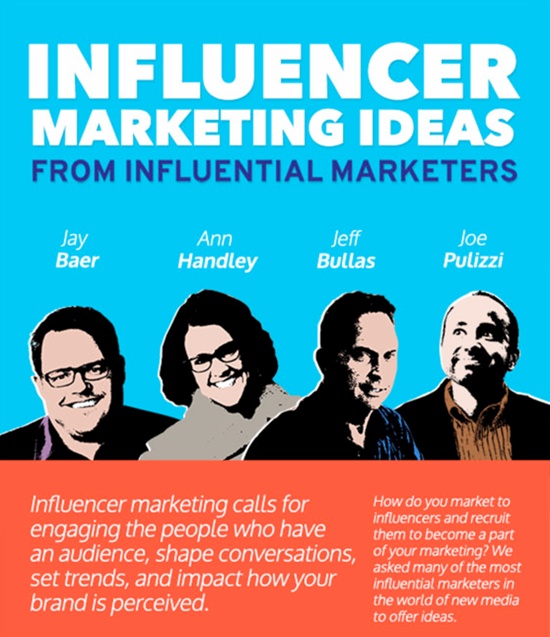
Top portion of an infographic I created for my blog featuring ideas from 22 influential marketers.
6. Presentation. Presentations (AKA slideshows) can become much more interesting with the inclusion of ideas from collaborators. In fact, I can't think of a business category where this strategy wouldn't apply.
7. Podcast. Podcasts are a natural for collaboration. And the 2018 numbers from Edison Research (conducted in partnership with Triton Digital) show a steadily upward trend in the popularity of podcasts for five consecutive years.
Most podcasters host interview shows with subject-matter experts. Another viable strategy is bringing two or more experts together on a regular basis.
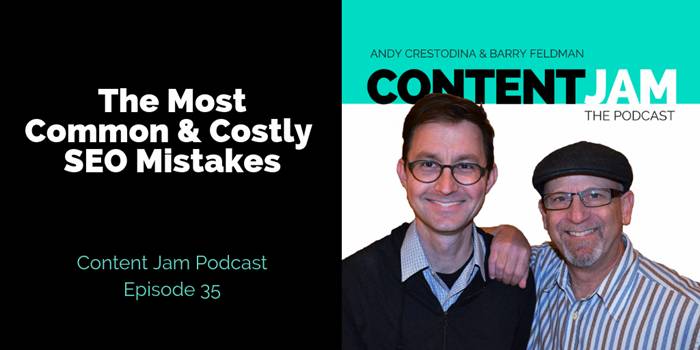
Andy Crestodina and I do this with our two-person conversation format in our podcast program Content Jam (formerly Content Matters).
8. Video. Like podcasts, video is ideal for collaboration. Video content might feature an industry influencer—or several—as well as partners, customers, or any other relevant collaborator.
I want to also mention that video you record with expert spokespersons—in interview, webinar, talking head, or other format—can be easily repurposed for audio-only, text-based, and just about any other media format.
9. Research. Buzzsumo and Moz collaborated on a research project in which they discovered that research-based studies are among a short list of content types that outperform most others in earning shares and links.
Of course, conducting research is laborious and time-intensive, which makes it ideal for collaborating. With multiple companies working together you can divide the costs, reduce the workload, and pool a larger sample.
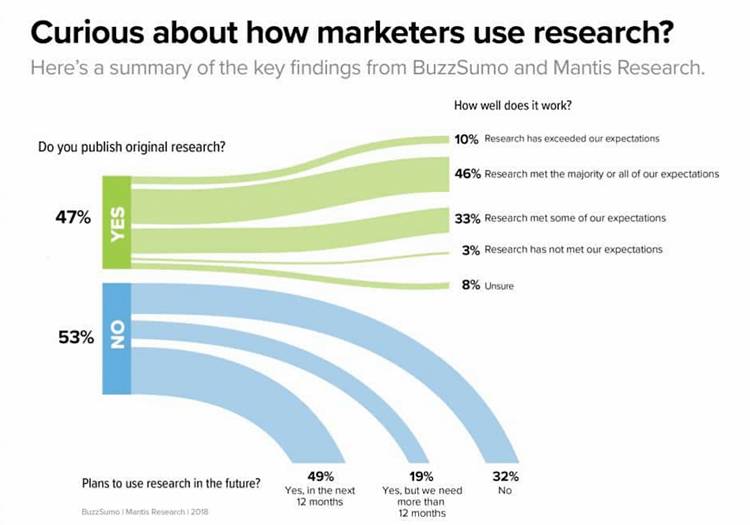
The data above—the result of a collaboration between Buzzsumo and Mantis research—shows nearly half of content marketers now publish original research, half of those who don't are making plans to, and the majority meet or exceed their expectations.
10. Workshops and events. Rally collaborators to bring variety and intrigue to your marketing events. Here again, hosting guest speakers (and, of course, recording the sessions) lends itself to repurposing every which way.
11. Courses. Teach together. (I stole that succinct sentence from this post about collaboration by Regina.
12. Blog. If there's a no-brainer on this list, it's this one: Look for opportunities to invite experts to contribute guest posts to your blog.
Shortcut alert: Simply curate an expert's content and cite your source, or
look for ways to do that—and then some. For instance, you could find a great quote (or video, or podcast, or whatever) and invite the spokesperson to expand on their ideas in your blog post.
13. E-books and guides. Let's call this "big content"—the stuff you create, in many instances, to be downloaded from a landing page or form of some sort. You can pull collaborators into the mix where it strengthens the content, or you can even base your entire publication on collaborators.
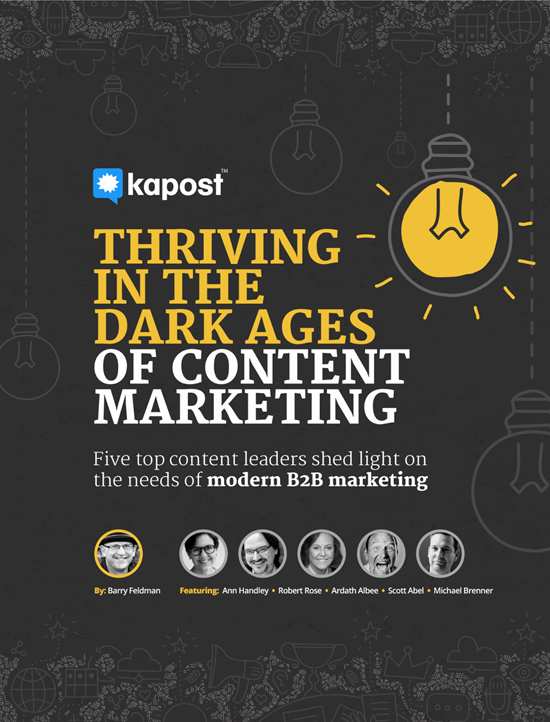
You can extend the mileage of ambitious collaboration projects like this one, an e-book I conceived and wrote for Kapost. Featuring a series of interviews with content marketing experts, it was repurposed in a variety of ways and became the subject of a subsequent webinar featuring two of the interviewees.
14. Contests and giveaways. I worked closely with ShortStack, a SaaS company that focuses largely on enabling brands to create contests, giveaways, sweepstakes, and various forms of interactive content. I realized some of the most interesting promotions were often the result of two or more brands' collaborating on a campaign.

This Instagram post promotes a co-branded contest from the publisher FeedFeed and natural food brand Bob's Red Mill. Look closely, and you'll see the post earned nearly 10K likes in one day.
15. Case studies. Demand Gen Report's 2017 Content Preferences Survey reveals buyers use case studies more than any other content to inform their purchasing decisions.
Partner with your clients to promote their brand and deliver real-world examples of how your products and services solve problems.
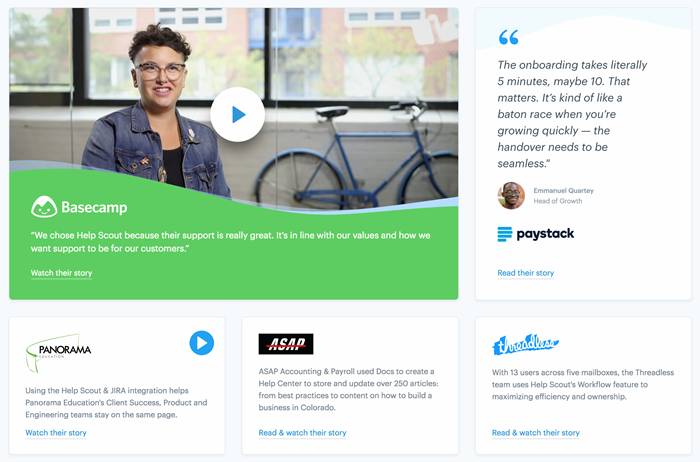
Source: "Customers" section of the Help Scout website.
Collaborate to Your Heart's Content
The 15 types of content I detailed in this post are prime examples of ways to collaborate on content, but perhaps it also sparks ideas that may work for your market.
Twitter chats... Instagram influencer campaigns... User communities... crowdsourced recipe books, photo galleries...
Collaborate on anything you can think of. I've found that once you dive in, you discover a world of possibilities. And I know you'll discover that collaboration makes content creation easier, more fun, more fruitful, and, in many cases, extremely effective.

